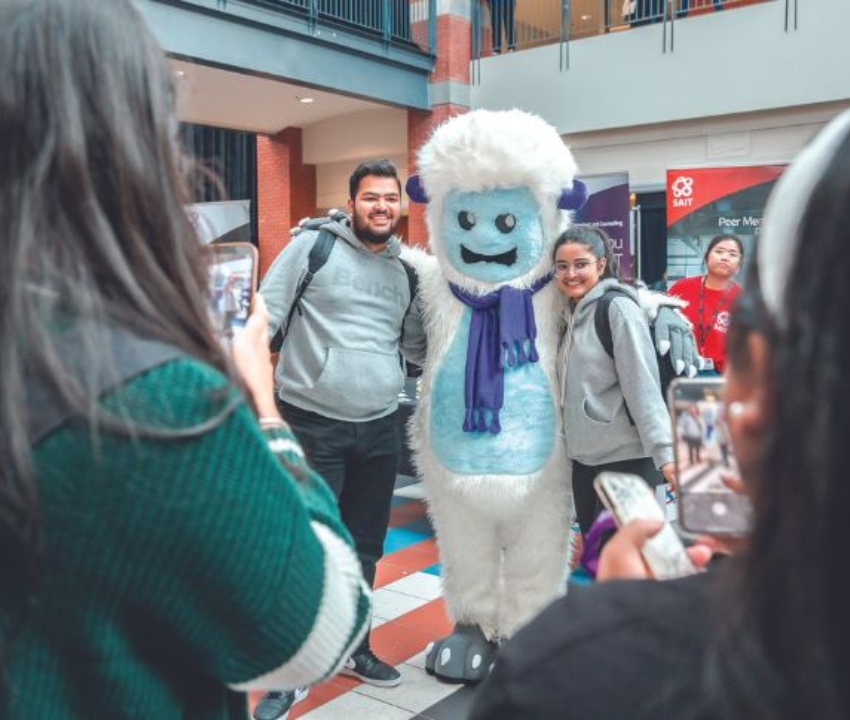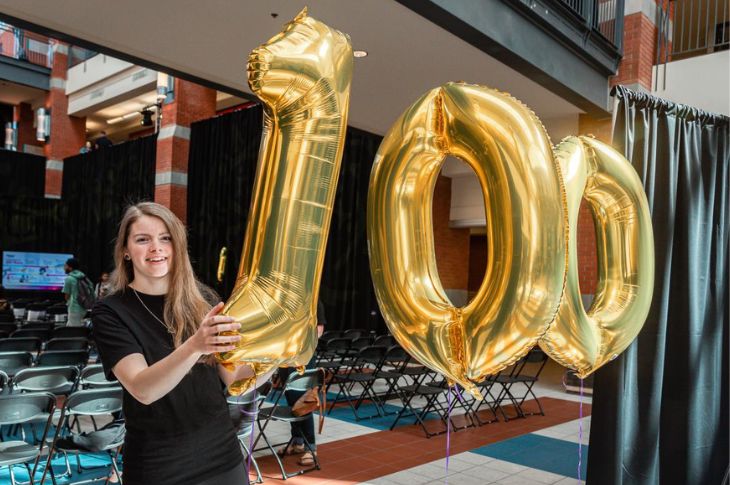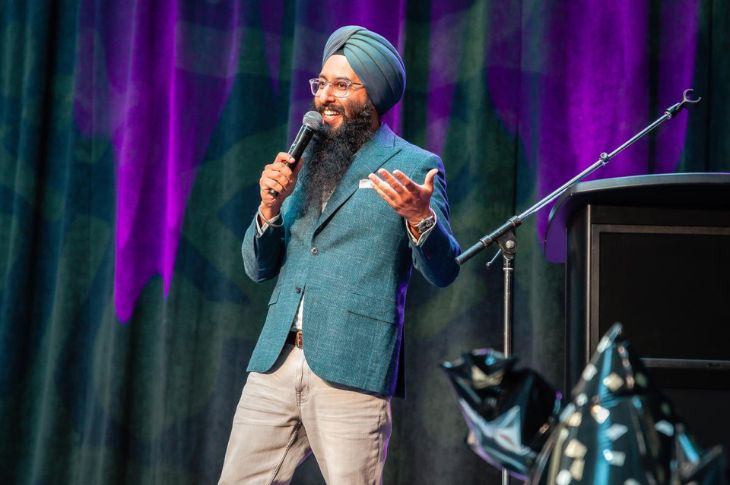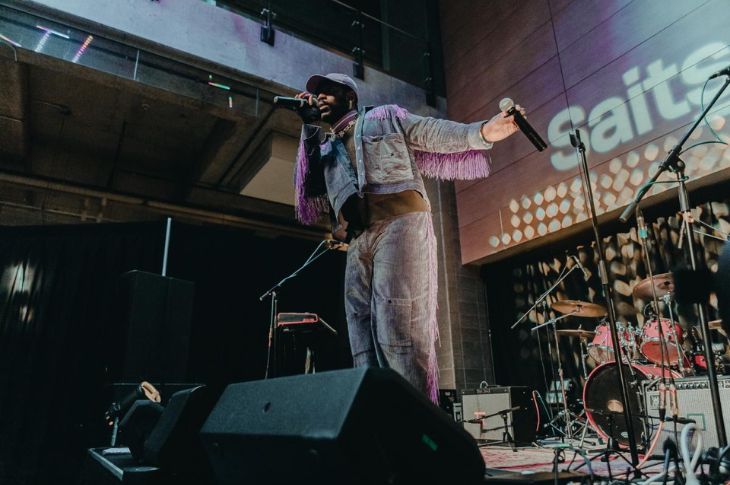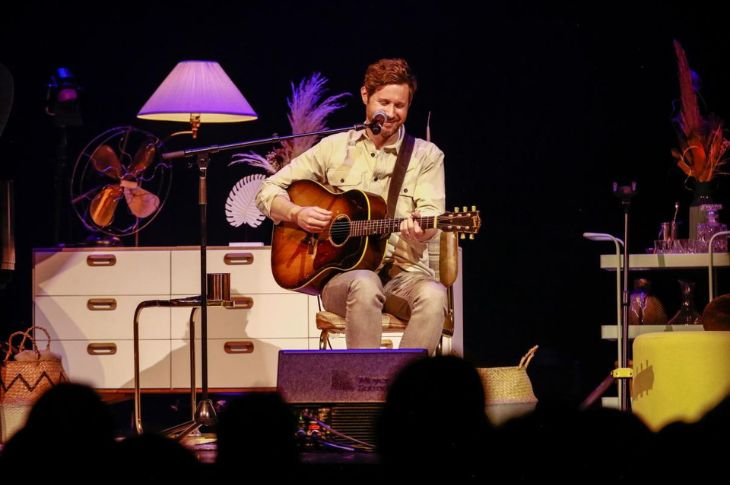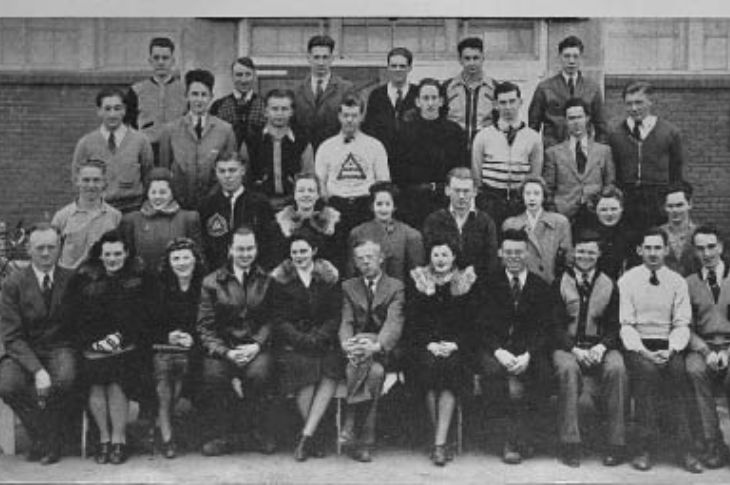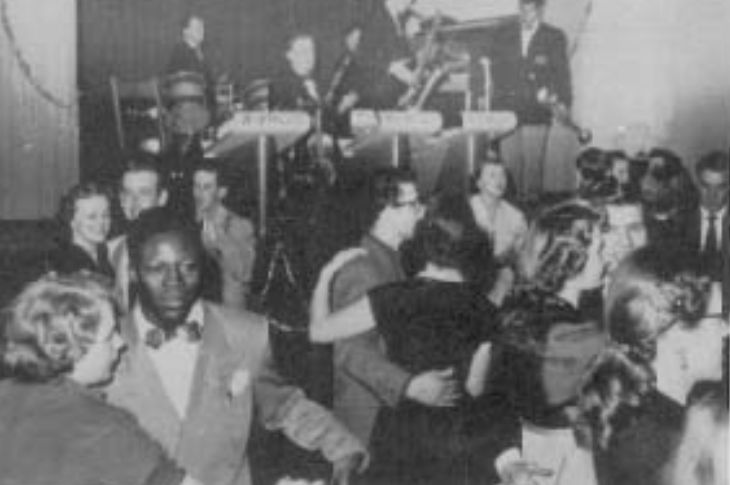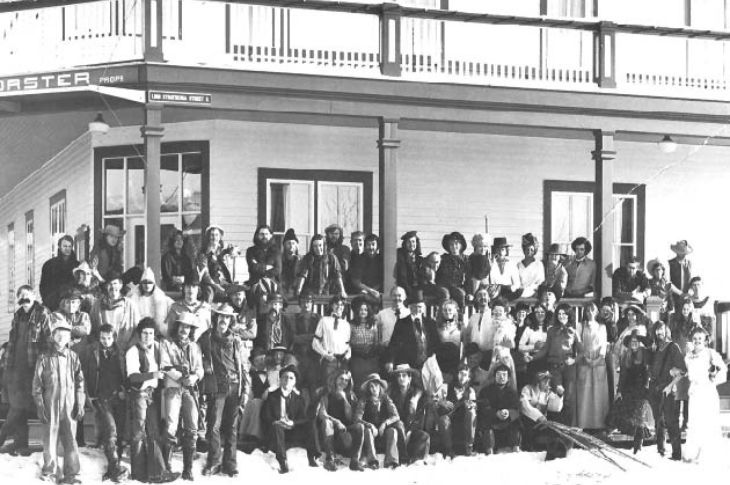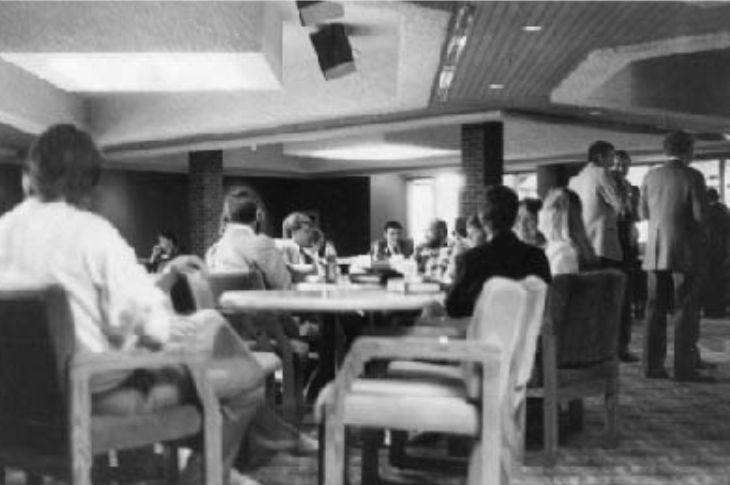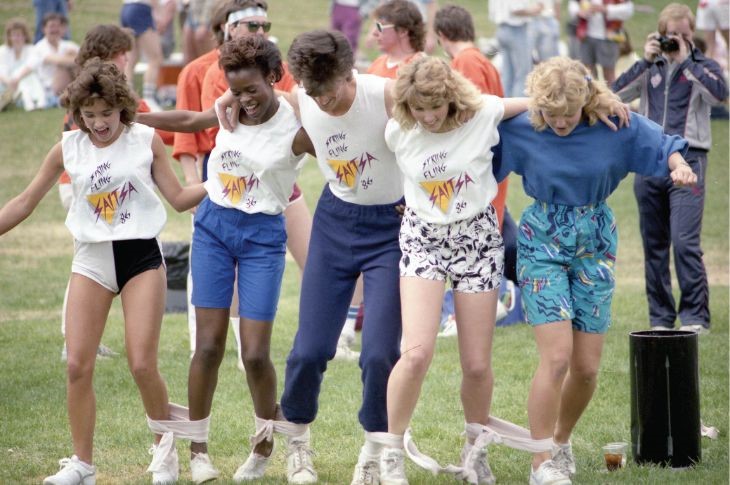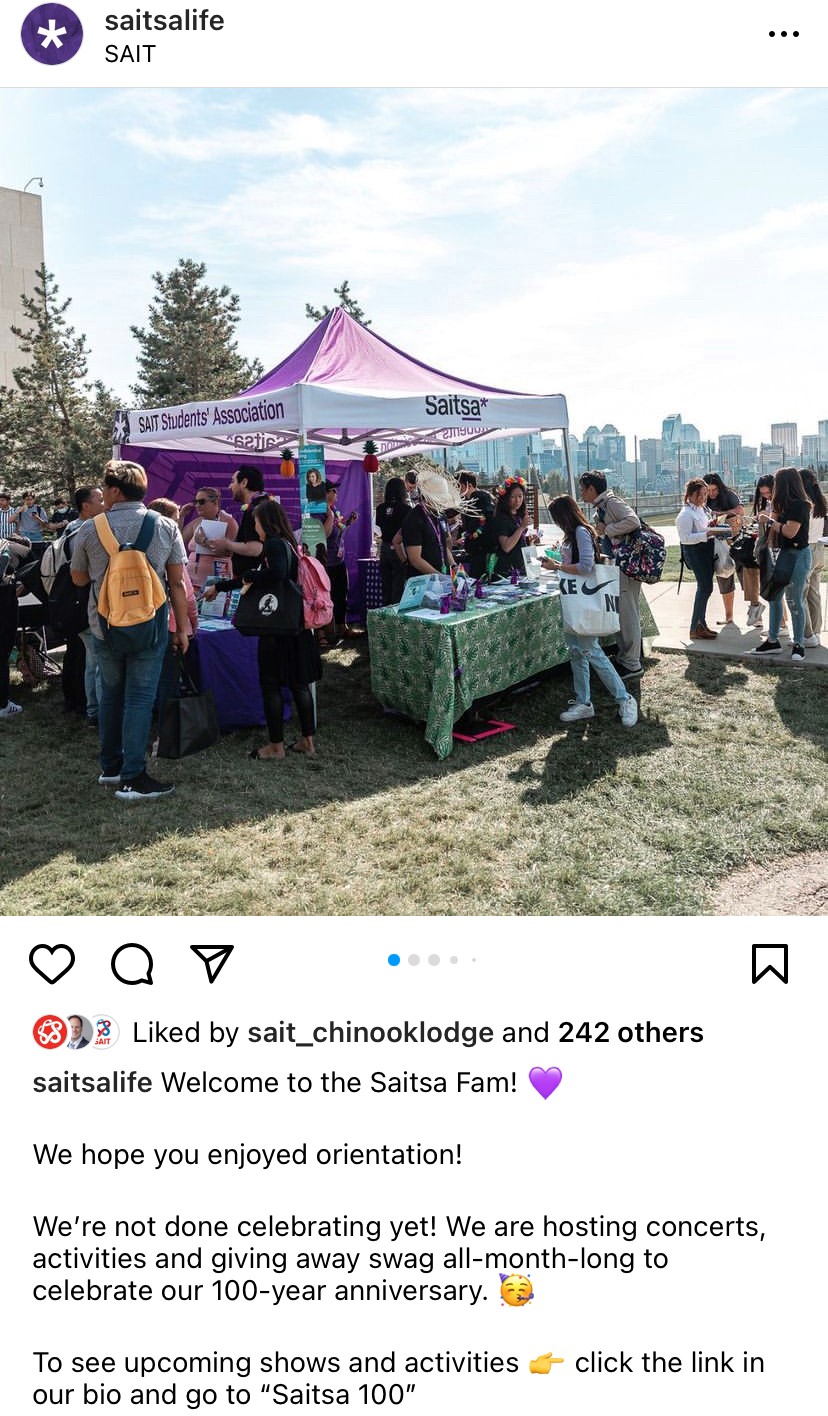 For 100 years, the organization has been a constant in improving students’ lives and experiences. One of Canada’s oldest students’ associations, Saitsa was formed in 1922 to — as quoted in a special centennial timeline posted on saitsa.com/100 — “control activities outside of the shop and classroom” while “promoting literary, athletic and social activities” for students. It has upheld that mission for a century — all while the school and its student body have been evolving.
For 100 years, the organization has been a constant in improving students’ lives and experiences. One of Canada’s oldest students’ associations, Saitsa was formed in 1922 to — as quoted in a special centennial timeline posted on saitsa.com/100 — “control activities outside of the shop and classroom” while “promoting literary, athletic and social activities” for students. It has upheld that mission for a century — all while the school and its student body have been evolving.
This unwavering dedication to students has helped Saitsa become a pillar of trust and support on campus. Elected by and from fall semester students each year, its Board of Directors (BOD) works to ensure students’ voices are heard and their experiences on campus are enjoyable.
After a century of hard work and advocacy, a celebration was more than justified, and it was a perfect opportunity to reflect on all this students’ association has accomplished for the students who roam SAIT’s halls.
“Here For You Since 1922” — it’s Saitsa’s motto, and it could not be more true.
Saitsa's centennial celebrations formally began with opening ceremonies on Sept. 6 and concluded with a singer-songwriter circle at the Southern Alberta Jubilee Auditorium on Sept. 24. Sandwiched in between was a variety of concerts both on and off-campus, as well as Saitsa Welcome Week, a series of events geared at educating students about campus resources, and about the vital differences between the Institute and its students’ association.
Saitsa Vice-President Aaron Ramos (BAMK ’22) says explaining how SAIT and Saitsa differ was an important part of the centennial — especially for new students — because “understanding the benefit of having a students’ association behind them is a much better experience than just celebrating something they don’t quite understand yet.”
Student volunteers — including second-year Hospitality and Tourism Management student Solange Said and second-year Information Technology-Computer Systems student Sanoop Sadique — learned more about these differences while helping with Saitsa centennial events and making meaningful connections with fellow students. However, what inspired them both to volunteer was simple: they wanted to be involved in this huge milestone.
“This represents a century of Saitsa surviving, growing and perfecting ways to support students and make their journey at SAIT better, and I wanted to be a part of this historic moment,” Said says.
Enriching Student Life
For the last 100 years, Saitsa has been responsible for enriching students’ social lives through events ranging from sock hops to speed dating; from yearbooks to the Tech-Art Record to the Emery Weal; from banquets and field trips to student clubs to concerts, and — at the height of pandemic lockdowns — online bingo.
On the practical side of things, the organization has brought value to students’ lives through its health and dental plan (providing students with affordable access to healthcare services), its Good Food Box program (offering students fresh produce at discounted prices), and Wellness Wednesdays (a weekly event serving free breakfasts to students around campus).
Throughout the pandemic, mental health awareness has become of greater concern for many stressed students, causing Saitsa’s current BOD to brainstorm ways of providing better support. It’s an example of how the BOD responds to student feedback, distributes surveys, and conducts research to better understand what issues are most pressing to the student body and to ascertain what kind of advocacy or support is needed.
Advocacy and Legacy
Two members of the BOD also sit on SAIT’s Board of Governors, which can help amplify student concerns at a high level on campus. By going to bat for students’ needs — whether by sitting on this board or by advocating for students through Saitsa’s membership in the Alberta Students’ Executive Council and the Canadian Alliance of Student Associations — BOD members like Ramos and Saitsa President Dawson Thomas work to effect meaningful change in the lives of SAIT students.
Recent examples include price reductions for some student transit and parking passes, and Saitsa’s collaboration with SAIT to create the Office of the Ombudsperson in 2021.
Thomas says the inaugural Ombudsperson, Kamini Bernard, has been successfully working as an independent, neutral party and a resource for students in navigating SAIT policies and processes.
Being agents of change for students is hard work — especially since BOD members start their terms in May and finish in May the following year once their successors have been elected. Thomas says this limited time within student government — and the time required to implement more ambitious initiatives — means some projects are completed by those BOD members who succeed them. However, for Ramos and Thomas, it’s all worth it to know that their wild dreams for improving student life at SAIT can also be achieved.
“At the end of the day, we do what we do because we are students,” Ramos says. “It’s not just about us. We care about our peers, our classmates — everyone around us. When everyone else is happy, then we’re happy, too.”
With centennial celebrations in the rear-view mirror and a century of success to look back on, both Thomas and Ramos have high hopes for the continued achievements of this historic students’ association. Between the two, their wish-list for future Saitsa achievements includes increased resources and support for Indigenous students, greater access to affordable mental health resources, and a world in which international students’ costs of living are on par with those of domestic students. While the wheels are already in motion for some of these dreams, only time will tell how long it will be before they become a reality. However, Thomas knows it’s likely these goals will come to fruition much sooner than in 100 years — and he hopes the future holds even more opportunities for diversity in the world of student government.
“It’s really special for a students’ association to be able to celebrate 100 years,” Thomas says. “And being the first elected Indigenous Saitsa president — elected at the same time as the centennial — is a pretty amazing benchmark. I think it’s going to pave the way for a really amazing future for Saitsa.”
Style with Substance
During the 2018/19 academic year, SAITSA rebranded and began writing its name as Saitsa. “SAIT Students’ Association is not just an acronym — SAITSA — it’s a community,” explains Husson Zaman (JA ’14), manager, Saitsa Marketing and Communications. “And that community — Saitsa — has its own individual identity complementary to SAIT’s identity but, in the end, still its own.”
This story was originally written for the print version of the Fall 2022 issue of LINK magazine.

Oki, Âba wathtech, Danit'ada, Tawnshi, Hello.
SAIT is located on the traditional territories of the Niitsitapi (Blackfoot) and the people of Treaty 7 which includes the Siksika, the Piikani, the Kainai, the Tsuut’ina and the Îyârhe Nakoda of Bearspaw, Chiniki and Goodstoney.
We are situated in an area the Blackfoot tribes traditionally called Moh’kinsstis, where the Bow River meets the Elbow River. We now call it the city of Calgary, which is also home to the Métis Nation of Alberta.
